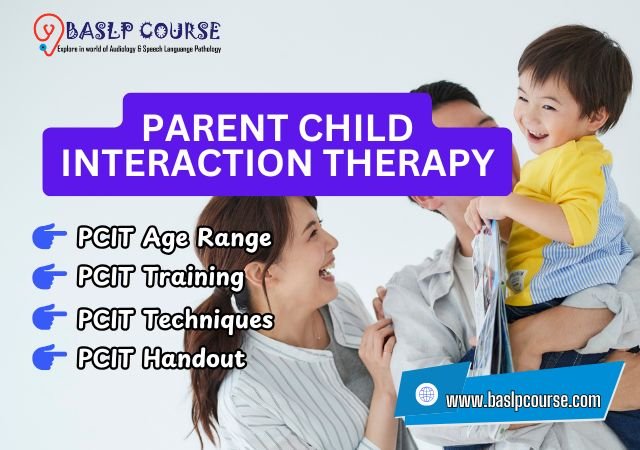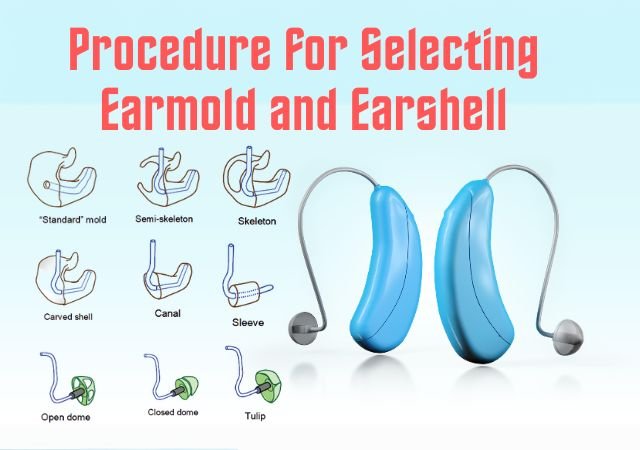Planning Implementation and Evaluation of Treatment in SLP Questions Free: An article on the Planning, Implementation and Evaluation of Treatment in Speech-Language Pathology (SLP) Everything Treatment Planning Including Treatment Planning — In this stage, practitioners cover factors to examine for treatment results, setting treatment priorities, and determining a treatment outline. In this phase, predictions of treatment outcomes are provided, and recommendations are shared based on established treatment principles and procedures.

The Implementation phase focuses on carrying out the treatment plans and adjusting as needed according to the patient responses. Treatment Evaluation highlights the need to consider how to track treatment progress and outcomes, consider treatment and evaluation plans, and provide follow up on post-treatment referrals and recommendations. Treatment topics cover a variety of areas of focus, including speech sound production; fluency; voice; language; social communication; cognitive communication deficits; augmentative and alternative communication; hearing; aural rehab; and swallowing and feeding.
Access to SLP Praxis practice questions, free SLP Praxis practice tests, and ASHA SLP Praxis practice questions can help solidify your understanding and application of these treatment processes during preparations.
ASHA SLP Praxis Exam Study Guide
The following list represents the topics covered in the Audiology Praxis Exam currently administered. These topics align with standards for clinical certification set by the American Speech-Language-Hearing Association (ASHA).
ASHA Certificate of Clinical Competence in Audiology
ASHA Audiology Praxis Exam – Dates | Syllabus | Prep Materials
Audiology Praxis Exam Practice Test Question Free – Study Guide
ASHA SLP Praxis Exam Pattern
In this section, we offer free practice questions on the Planning Implementation and Evaluation of Treatment in SLP for the ASHA Audiology Praxis Exam. To access free practice questions on other topics, please click the links provided in this table.
| Content Categories | Approximate Number of Questions | Approximate Percentage of Examination |
| Foundations and Professional Practice in SLP | 44 | 33.3% |
| Screening, Assessment, Evaluation, and Diagnosis | 44 | 33.3% |
| Planning, Implementation, and Evaluation of Treatment | 44 | 33.3% |
Foundations and Professional Practice in SLP
In this section, we break down the Planning Implementation and Evaluation of Treatment in SLP into three detailed subtopics. Additionally, we offer free practice questions for the Planning Implementation and Evaluation of Treatment in SLP. You can also access other topics and their corresponding free practice questions in the previous table.
Planning, Implementation, and Evaluation of Treatment (33.3%)
A. Treatment Planning
1. Evaluating factors that can affect treatment
2. Initiating and prioritizing treatment and developing goals
3. Determining appropriate treatment details
4. Generating a prognosis
5. Communicating recommendations
6. General treatment principles and procedures
B. Treatment Evaluation
1. Establishing methods for monitoring treatment progress and outcomes to evaluate assessment and/or treatment plans
2. Follow-up on post-treatment referrals and recommendations
C. Treatment
1. Speech sound production
2. Fluency
3. Voice, resonance, and motor speech
4. Receptive and expressive language
5. Social aspects of communication, including pragmatics
6. Communication impairments related to cognition
7. Treatment involving augmentative and alternative communication
8. Hearing and aural rehabilitation
9. Swallowing and feeding
Planning Implementation and Evaluation of Treatment in SLP Questions Free
Welcome to the Multiple Choice Questions section focused on the Planning, Implementation, and Evaluation of Treatment in Speech-Language Pathology (SLP). This section will test your knowledge and understanding of various aspects of the treatment process, including treatment planning, implementation, and evaluation. You’ll encounter questions on evaluating factors that affect treatment, setting priorities, monitoring progress, and addressing a range of treatment areas from speech sound production to swallowing and feeding.
Instructions:
- Read Each Question Carefully: Take your time to understand the question and all the answer choices before selecting your answer.
- Select the Best Answer: Choose the answer that best completes the statement or answers the question based on the knowledge covered in the introduction.
- Review Your Answers: After completing all the questions, review your answers to ensure they reflect your best understanding of the material.
- Use This as a Learning Tool: These questions are designed to reinforce your knowledge and identify areas where further study may be needed.
Good luck, and remember that practice is key to your success on the SLP Praxis Exam!
Which of the following is a factor that can affect treatment outcomes in speech therapy?
- A) Client’s motivation
- B) Therapist’s schedule
- C) Room size
- D) Type of equipment used
What is the first step in evaluating factors that can affect treatment?
- A) Selecting treatment methods
- B) Identifying the client’s needs and characteristics
- C) Scheduling sessions
- D) Choosing the treatment setting
When considering cultural factors in treatment planning, a clinician should:
- A) Assume all clients have the same needs
- B) Avoid discussing culture
- C) Consider the client’s cultural background and preferences
- D) Only focus on the language differences
When initiating treatment, which goal should a clinician prioritize?
- A) Long-term goals
- B) Goals that are easy to achieve
- C) Goals that address the most immediate needs
- D) Financial goals
Which method is most effective for prioritizing treatment goals?
- A) Selecting goals based on client’s preferences
- B) Choosing randomly
- C) Using a standardized assessment tool
- D) Relying solely on clinical intuition
What is the primary purpose of developing goals in a treatment plan?
- A) To outline the clinician’s tasks
- B) To provide a roadmap for client progress
- C) To determine the clinician’s schedule
- D) To ensure compliance with insurance
Which of the following details is important when determining a treatment plan?
- A) Location of the clinic
- B) Number of sessions per week
- C) Therapist’s credentials
- D) Availability of free parking
How should a clinician decide on the duration of treatment sessions?
- A) Based on the client’s attention span and endurance
- B) Following a standard 60-minute session
- C) According to the clinician’s availability
- D) Based on the client’s financial situation
Which factor is least important in determining treatment details?
- A) Severity of the disorder
- B) Clinician’s years of experience
- C) Client’s specific needs
- D) Evidence-based practices
A prognosis in treatment planning refers to:
- A) A prediction of the client’s potential progress
- B) A summary of the assessment results
- C) A description of the client’s past history
- D) A list of treatment techniques
Which factor can most influence a positive prognosis?
- A) Severity of the initial condition
- B) Number of treatment sessions
- C) Client’s level of engagement
- D) The popularity of the clinician
What is the clinician’s role in generating a prognosis?
- A) To guarantee specific outcomes
- B) To provide an informed prediction based on evidence and client factors
- C) To dictate the client’s progress
- D) To encourage unrealistic expectations
Effective communication of treatment recommendations involves:
- A) Using technical jargon to impress clients
- B) Speaking clearly and using simple language
- C) Only providing written instructions
- D) Minimizing the discussion to save time
When a client is reluctant to follow recommendations, a clinician should:
- A) Insist on compliance
- B) Understand the client’s concerns and provide additional information
- C) Ignore the reluctance
- D) Refer the client to another specialist
What is the most important aspect of communicating treatment plans to clients?
- A) Using medical terminology
- B) Ensuring clients understand the goals and expectations
- C) Limiting the amount of information shared
- D) Providing only written documentation
Which principle is fundamental to all treatment procedures?
- A) Individualization based on client needs
- B) Uniform application across all clients
- C) Following the same protocol for every client
- D) Prioritizing speed over quality
Evidence-based practice in treatment planning means:
- A) Using treatments that are popular
- B) Relying solely on clinical experience
- C) Integrating clinical expertise with the best available research
- D) Focusing on cost-effective treatments
General treatment principles should be guided by:
- A) Clinician’s personal beliefs
- B) Client’s desires regardless of their relevance
- C) Scientific evidence and client-centered care
- D) The opinions of other professionals
Why is monitoring treatment progress important?
- A) To determine if a client likes the therapy
- B) To adjust treatment plans based on the client’s progress
- C) To fill out insurance paperwork
- D) To lengthen the duration of treatment
Which method is commonly used to monitor treatment progress?
- A) Client self-reports only
- B) Objective measurements and regular assessments
- C) Random guesswork
- D) Therapist’s intuition
When should a treatment plan be revised?
- A) Only at the end of the therapy
- B) When progress is not being made as expected
- C) Every session regardless of progress
- D) Based on the client’s mood
The purpose of post-treatment follow-up is to:
- A) Ensure continued progress and address any new issues
- B) Promote more sessions with the same clinician
- C) Gather data for research
- D) Evaluate the effectiveness of the therapist
What should a clinician do if a client does not follow through with a referral?
- A) Discharge the client
- B) Follow up to understand barriers and encourage compliance
- C) Refer to another specialist immediately
- D) Ignore the lack of follow-through
Which factor is least important in follow-up after treatment?
- A) Checking in regularly with the client
- B) Providing additional support as needed
- C) Offering financial incentives to continue treatment
- D) Reviewing the client’s progress
Which technique is most effective for treating articulation disorders?
- A) Repetitive practice with minimal feedback
- B) Using biofeedback and visual cues
- C) Ignoring errors to avoid discouraging the client
- D) Relying on spontaneous recovery
When treating speech sound disorders, it is important to:
- A) Focus only on vowels
- B) Prioritize the most frequently misarticulated sounds
- C) Work exclusively on consonant clusters
- D) Ignore the client’s specific difficulties
What is the primary goal of speech sound production treatment?
- A) To increase the speed of speech
- B) To enhance clarity and accuracy of speech sounds
- C) To reduce vocal volume
- D) To lengthen speech utterances
Which of the following is a common treatment approach for stuttering?
- A) Avoidance of speaking situations
- B) Speech modification techniques like easy onset
- C) Rapid speech drills
- D) Ignoring the stutter
Cognitive-behavioral therapy in fluency treatment is used to:
- A) Increase speech rate
- B) Address the psychological aspects of stuttering
- C) Train vocal cords
- D) Improve singing skills
What is an important consideration in treating fluency disorders?
- A) Minimizing therapy sessions
- B) Understanding the individual’s experiences and triggers
- C) Using only one technique for all clients
- D) Prioritizing non-verbal communication
When treating voice disorders, which factor is critical?
- A) Increasing the client’s vocal volume
- B) Understanding the underlying cause of the voice disorder
- C) Only focusing on the pitch of the voice
- D) Eliminating all vocal rest
Resonance disorders are often treated using:
- A) Surgical interventions exclusively
- B) Behavioral techniques such as nasal airflow control
- C) Increasing vocal loudness
- D) Vocal cord strengthening exercises
Motor speech disorders can involve difficulties with:
- A) Only the lips
- B) Planning, coordinating, and executing speech movements
- C) Hearing sounds
- D) Understanding speech
In treating receptive language disorders, a key strategy is:
- A) Increasing the client’s expressive vocabulary
- B) Using visual aids to enhance understanding
- C) Speaking faster to challenge the client
- D) Avoiding repetition
What is a primary goal in treating expressive language disorders?
- A) To improve the client’s ability to understand complex sentences
- B) To increase the clarity and variety of verbal expression
- C) To teach sign language exclusively
- D) To focus on written language skills
When should a clinician consider using alternative communication methods?
- A) When a client shows no progress with verbal communication
- B) As a first option for all clients
- C) Only for children
- D) To replace verbal communication entirely
Social communication skills involve:
- A) Only understanding spoken language
- B) Using language appropriately in different social contexts
- C) Mastering grammatical rules
- D) Memorizing vocabulary lists
Which of the following is a goal in pragmatics treatment?
- A) Improving fluency
- B) Enhancing turn-taking and conversational skills
- C) Increasing speech volume
- D) Focusing on phonological awareness
Pragmatics training often includes:
- A) Teaching vocabulary
- B) Practicing non-verbal communication and eye contact
- C) Reading comprehension exercises
- D) Grammar drills
Cognitive-communication disorders may result from:
- A) Motor skill deficits
- B) Cognitive impairments such as memory or attention deficits
- C) Purely sensory impairments
- D) Social factors
Treatment for cognitive-communication impairments often focuses on:
- A) Improving cognitive skills like memory and problem-solving
- B) Increasing vocal loudness
- C) Enhancing speech articulation
- D) Reducing sentence length
What is a common tool used in cognitive-communication therapy?
- A) Articulation drills
- B) Memory aids and structured tasks
- C) Speech fluency exercises
- D) Vocal cord strengthening
Augmentative and alternative communication (AAC) is primarily used for:
- A) Enhancing vocal quality
- B) Providing communication means for individuals with severe speech or language impairments
- C) Training vocal cords
- D) Teaching foreign languages
Which of the following is a type of AAC?
- A) Oral motor exercises
- B) Picture exchange communication system (PECS)
- C) Traditional speech therapy
- D) Singing exercises
A key consideration when selecting AAC devices is:
- A) The device’s popularity
- B) The client’s ability and needs
- C) The cost of the device
- D) The clinician’s familiarity with the device
Aural rehabilitation is important for:
- A) Individuals with no hearing issues
- B) Those who need to adapt to hearing loss or amplification devices
- C) Clients focusing on articulation only
- D) All children regardless of hearing status
Which aspect is typically addressed in aural rehabilitation?
- A) Improving pitch control
- B) Enhancing listening and communication strategies
- C) Reducing speech rate
- D) Increasing vocal loudness
When is aural rehabilitation typically initiated?
- A) After full recovery from hearing loss
- B) As soon as hearing loss is identified or treated with amplification
- C) Only after speech therapy is completed
- D) Only in adulthood
Dysphagia therapy focuses on:
- A) Improving vocal quality
- B) Safe and efficient swallowing and feeding
- C) Enhancing speech articulation
- D) Increasing food variety
A common strategy in swallowing therapy is:
- A) Strengthening vocal cords
- B) Teaching safe swallowing techniques and compensatory strategies
- C) Focusing solely on nutrition
- D) Using AAC devices
Answer Key:
- A
- B
- C
- C
- C
- B
- B
- A
- B
- A
- C
- B
- B
- B
- B
- A
- C
- C
- B
- B
- B
- A
- B
- C
- B
- B
- B
- B
- B
- B
- B
- B
- B
- B
- B
- A
- B
- B
- B
- B
- A
- B
- B
- B
- B
- B
- B
- B
- B
- B
ASHA SLP Praxis Practice Test Free
| SLP Praxis Practice Test Free |
| Foundations and Professional Practice in SLP Screening, Assessment, Evaluation, and Diagnosis Planning, Implementation, and Evaluation of Treatment |
References:
- Praxis Examinations in Audiology and Speech-Language Pathology
- About the Praxis Examination in Speech-Language Pathology
- Praxis Exam Policies [PDF]
- Speech-Language Pathology Exam (5331) Content








0 Comments